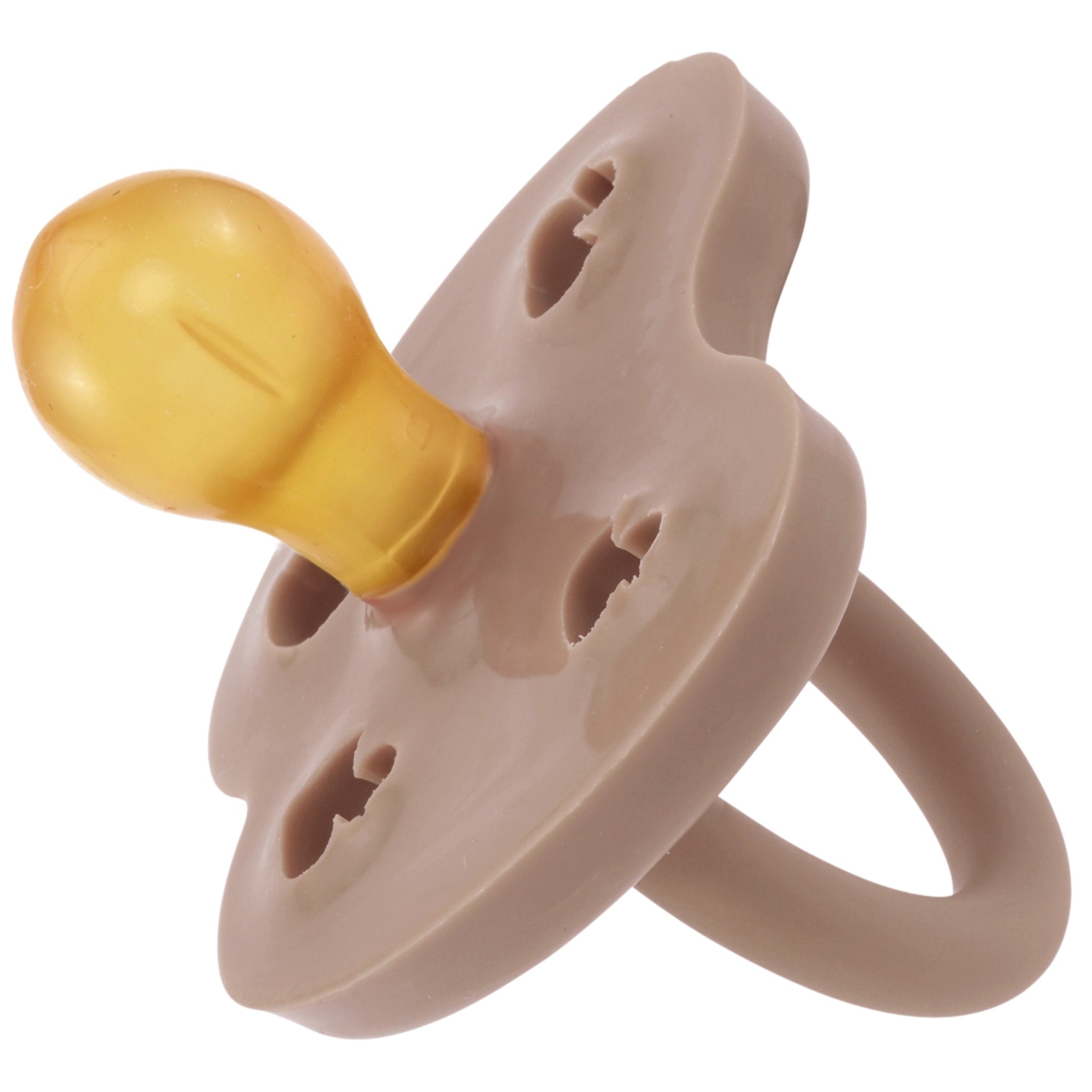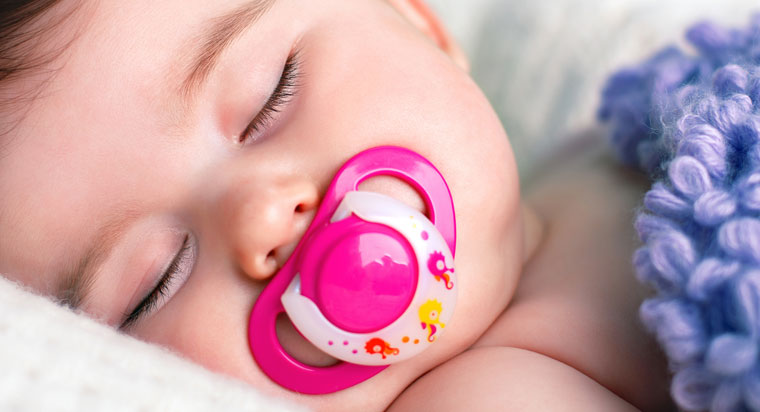The Pacifier: A Comprehensive Guide to Soothing Comfort
A pacifier, commonly known as a soother or a dummy, is a small, nipple-like device designed for infants to suck on. It provides a soothing and calming effect, mimicking the natural instinct to suckle. Typically made with a silicone or latex nipple and a shield, it offers comfort, helps babies relax, and can aid in reducing fussiness. While offering benefits like potential relief from minor discomfort and a possible reduction in the risk of Sudden Infant Death Syndrome (SIDS) during sleep, the pacifier also presents considerations such as potential dental issues with prolonged use and the need for careful weaning strategies. Overall, the pacifier serves as a simple yet essential tool in early childhood care, offering both comfort and potential drawbacks that necessitate responsible and informed usage.
Benefits of Pacifiers.

The pacifier, a small but mighty tool in the realm of baby care, has been a steadfast companion for infants around the world. Often regarded as a magical soother, this simple yet effective device has played a significant role in comforting babies and offering parents respite for generations. In this comprehensive guide, we will delve into the history, benefits, controversies, proper usage, and eventual weaning of the pacifier, shedding light on its multifaceted nature and impact on infants and caregivers.
The Origin and Evolution of the Pacifier
The concept of using pacifiers to comfort babies dates back centuries. Historically, materials such as coral, bone, and wood were used to fashion objects that served a similar purpose to modern-day pacifiers. The term "pacifier" itself emerged in the early 20th century when rubber varieties became prevalent.
From rudimentary designs to the contemporary silicone or latex nipple attached to a plastic shield, pacifiers have evolved both in shape and material. The modern pacifier not only calms infants but is also designed with safety and convenience in mind.
Types of Pacifiers
Pacifiers come in various types and designs, catering to different preferences and needs. Here are some common types of pacifiers available in the market:
- Orthodontic Pacifiers: These pacifiers are designed to mimic the shape of the natural nipple. They are thought to support proper oral development by conforming to the baby's palate and encouraging the tongue to rest in a natural position. They usually have a flat, asymmetrical shape.
- Cherry-Shaped Pacifiers: These pacifiers have a rounded, cherry-like nipple. They are a traditional design and might not be orthodontically shaped like some other pacifiers. Some babies might find them more comfortable due to their rounded shape.
- One-Piece Pacifiers: These pacifiers have a single molded construction without any separate parts. They are often considered more hygienic because they lack small pieces that could break off. One-piece pacifiers are also generally easier to clean.
- Multiple-Piece Pacifiers: These pacifiers have separate pieces, such as a nipple, shield, and handle. While they may come in various shapes and designs, the multi-piece construction might be slightly more complex to clean.
- Silicone vs. Latex Pacifiers: Pacifiers can be made of either silicone or latex. Silicone pacifiers are more durable, easy to clean, and do not retain odors or flavors. On the other hand, latex pacifiers are softer and more flexible, but they might wear out faster and can trigger latex allergies in some babies.
- Decorative or Novelty Pacifiers: These pacifiers often have playful designs, such as animal shapes, fun colors, or unique patterns. While they can be visually appealing, caregivers should ensure they meet safety standards and prioritize the baby's comfort and safety.
- Age-Specific Pacifiers: Some pacifiers are designed for specific age groups, with variations in the size of the nipple, shield, and overall construction to cater to the developmental needs of infants at different stages.

Benefits of Pacifiers
The benefits of using pacifiers for infants are multifaceted and include:
- Soothing and Comfort: Pacifiers offer immediate comfort and a sense of security to infants by fulfilling their innate sucking reflex. The act of sucking on a pacifier helps to calm and soothe babies, providing a source of relaxation.
- Potential SIDS Risk Reduction: Studies have suggested that the use of pacifiers during sleep may reduce the risk of Sudden Infant Death Syndrome (SIDS). While the precise mechanisms behind this are not entirely clear, the use of a pacifier during sleep has been associated with a lower incidence of SIDS.
- Distraction and Pain Relief: Pacifiers serve as a distraction and a source of relief for infants during uncomfortable situations, such as vaccinations or minor discomfort. The sucking motion can help babies manage pain and provide a comforting distraction during distressing times.
- Self-Soothing: Pacifiers aid in promoting self-soothing among infants. When babies are unable to be immediately attended to, pacifiers offer a means for them to soothe themselves, providing a sense of security in the absence of immediate caregiver attention.
- Improved Sleep: The use of pacifiers has been linked to better sleep patterns for some babies. Babies who use pacifiers might fall asleep more easily and have a reduced tendency to wake up during the night.
Controversies Surrounding Pacifier Use
1. Dental and Oral Development: Extended pacifier use, especially beyond the age of two or three, has been associated with dental problems such as misaligned teeth or palate issues. It's essential to use pacifiers appropriately and consider weaning strategies as the child grows.
2. Nipple Confusion: Pacifiers can sometimes cause confusion for breastfeeding infants, affecting their latch and causing potential breastfeeding challenges. Experts recommend introducing the pacifier after breastfeeding is well established, usually after the first few weeks of life.
Proper Usage and Maintenance
1. Selecting the Right Pacifier: Choosing a pacifier that is age-appropriate, made of safe materials, and has ventilation holes in the shield to prevent skin irritation is crucial. Parents should consider shapes and sizes that suit their baby's mouth.
2. Cleaning and Sterilization: Maintaining hygiene is vital. Boiling pacifiers or using specific sterilization equipment recommended by manufacturers helps eliminate bacteria and ensures a safe environment for the baby.
3. Usage Limitations: Pacifiers should not be coated in sweet substances or honey to entice babies, as this can lead to dental issues and potential infections. Moreover, parents should refrain from tying pacifiers around a baby's neck due to the risk of strangulation.

Purpose of Pacifier
The primary purpose of a pacifier is to provide comfort and soothing for infants. Here are the key purposes and functions of a pacifier:
- Soothing: Pacifiers serve as a source of comfort for babies by fulfilling their natural sucking reflex. The act of sucking on a pacifier helps to calm and relax infants, offering them a sense of security and comfort.
- Sleep Aid: Pacifiers can assist in aiding babies to fall asleep by providing a soothing and familiar action. The rhythmic sucking motion often helps infants to relax, facilitating better sleep patterns.
- Distraction and Pain Relief: During moments of discomfort, such as during vaccinations or minor discomfort, pacifiers act as a source of distraction and relief for babies. The sucking action can help to alleviate pain and offer a comforting distraction during distressing situations.
- Self-Soothing: Pacifiers enable infants to self-soothe, especially when immediate caregiver attention is not available. They offer a means for babies to calm themselves, providing a sense of security and comfort.
- Potential Reduction in SIDS Risk: Research has indicated that the use of pacifiers during sleep may potentially reduce the risk of Sudden Infant Death Syndrome (SIDS). While the exact mechanisms are not fully understood, using a pacifier during sleep has been associated with a decreased incidence of SIDS.
Advantages of Pacifiers:
- Soothing and Comfort: Pacifiers provide immediate comfort to babies by fulfilling their natural instinct to suck. This action often helps to calm and soothe infants, aiding in relaxation and promoting better sleep.
- Potential SIDS Reduction: Research suggests that the use of pacifiers during sleep might reduce the risk of Sudden Infant Death Syndrome (SIDS). While the exact reasons are not entirely clear, using a pacifier during naps or nighttime sleep might contribute to a lower incidence of SIDS.
- Distraction and Pain Relief: Pacifiers can be a source of distraction and relief for infants during uncomfortable situations, such as when receiving vaccinations or coping with minor discomfort.
- Self-Soothing: Babies tend to find comfort and security in pacifiers, assisting in self-soothing, especially in the absence of direct caregiver attention.
![]()
Disadvantages of Pacifiers:
- Dental and Oral Issues: Extended use of pacifiers, especially past the age of two or three, can lead to dental problems. Misaligned teeth, palate issues, and changes in the shape of the mouth are potential concerns associated with prolonged use.
- Nipple Confusion and Breastfeeding Challenges: Introducing a pacifier too early can sometimes lead to nipple confusion for breastfeeding infants, affecting their latch and potentially causing breastfeeding challenges. It's recommended to establish a breastfeeding routine before introducing a pacifier.
- Hygiene and Safety Concerns: Pacifiers need to be kept clean and in good condition to avoid potential infections. Additionally, improper use, such as tying the pacifier around a baby's neck, poses safety risks and increases the possibility of strangulation.
- Dependency and Weaning Challenges: Over-reliance on a pacifier might lead to a strong dependence, making the weaning process challenging. The process of breaking the habit can be difficult and stressful for both the child and caregivers.
Weaning from Pacifier Use
Weaning a baby from a pacifier can be a gradual process. Experts suggest reducing the pacifier's use at certain times, like during play or sleep, before eventually eliminating it altogether. Gentle and patient approaches, such as offering comfort through other means or gradually limiting pacifier time, can help the transition.
The pacifier, a seemingly simple device, plays a complex role in the early stages of a child's life. Its benefits in soothing, potential reduction of SIDS, and aid in minor discomforts are significant. However, proper usage, careful consideration of potential issues, and an eventual weaning strategy are crucial for its optimal use.
Understanding the nuances of pacifier use can equip parents with the knowledge necessary to make informed decisions regarding their child's well-being. While controversies exist, the pacifier, when used judiciously and in accordance with best practices, remains a valuable aid in nurturing and comforting infants, standing as a steadfast companion in the journey of early childhood development.



